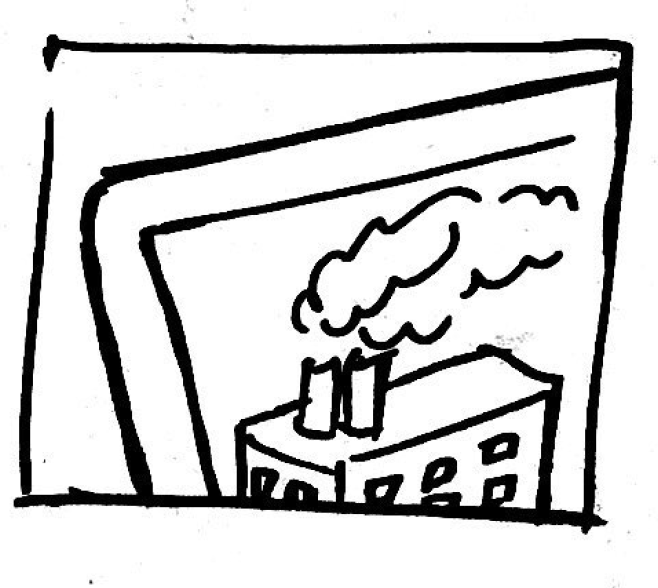behind the seen
Overview
Behind The Seen is an AR exhibition about climate change for Climate Museum that brings teenagers together to learn about the problem of climate change, grieve what has been lost, actively engage with solutions, and mobilize everyone to join the fight for a brighter future together in an engaging way.
Role
Team Lead, Research, Space Design, AR Design & Prototyping
Tools
Rhinos, Cinema4D, A-Frame, Reality Composer, Sketch
Client
The Climate Museum
Prototype Video
DESIGN CHALLENGE
A New Museum of the Path Ahead
The Climate Museum found us to design an interactive exhibition experience, which would be public on Governor’s Island. The goal of the exhibition is to increase awareness among teenagers about decarbonization.
Solution
An AR Exhibition about decarbonization
We designed an AR exhibition experience including an iPad application that guides teenagers through the journey, and a physical museum where teenagers learn about decarbonization from the consequence, to the cause, to the solution.
The Museum
I built a 3D museum model in order to communicate the concept with team and visualize the the spatial experience.
Scenes Inside
1st Room - Consequence
In the first room, teenagers will see a sculpture of the globe and a table of the glaciers.
They can scan the sculpture and see our planet is surrounded by the smog and the global warming became increasingly severe in the last century.
They will also see how glacier is melting and how it affects the lives of animals.
2nd Room - Causes
In the second room, teenagers will see a big table showing the globe transportation and factory system, which is the main resources of the fossil fuel production.
They can scan the surface and see how these factors cause the global warming.
3rd Room - Solutions
In the third room, teenagers will see a big painting of the renewable energy valley, a tangible way of decarbonization.
They can scan to learn how to fight against the climate change by simply turning on the renewable energy in the AR scenes, and share their experience with others to call for more people to join the campaign
HOW WE GET THERE?
Design Process
Understand
Desktop Research - Space
We looked at the location and the floor plan of the exhibition place in order to better understand visitors’ journey and their movement inside the museum.
Satellite Map - Governor’s Island
Floor Plan - Exhibition House
Desktop Research - Topic
By researching online, we had an overall understanding about the topic, decarbonization and climate change.
We understand which sources cause the climate change and how the level of carbon dioxide raises recent years.
Interview with Clients
We interviewed with the clients and synthesized their needs:
A visionary museum inspiring learning, dialogue, and action
Creating powerful exhibition experiences
To build community around climate education and solutions and move together toward a safer and more just future.
Look Outside for Inspiration
We visited a local exhibition about climate change in Natural History Museum in New York to study how they arrange the content, interaction, and traffic flow.
Here are the takeaways:
The content includes How climate works, Current and past climate, Causes of climate change, Consequences of climate change
Causes of the climate change includes Burning Fossil&Fuels, Deforestation, Electricity
Consequences of the climate change includes: Global Warming and Extreme Weather, Natural Disaster, Melting Glaciers, Droughts and Shrinking Lake, Food Shortage and Famine, Diseases Spreading, Invasive Species, Displaced People
Solutions of the climate change includes: Recycling, using renewable energy, planting trees
Open-end traffic flow makes the exhibition less crowded, which works perfectly for nonlinear framework.
The exhibition takes New York City as an example to better connect with audience.
The contrast of bright color and dark background makes data visualization compelling.
Interview with Visitors
We interviewed 12 families who visited the exhibition, and we found:
People like to take actions and contribute the environment after visiting the exhibition, but the exhibition doesn’t show much the solution part.
People heard about decarbonization, but do not know what it is exactly. They need to better understand what decarbonization is.
Kids like learning from emerging media and interaction. They are impressed by the big scale display screen.
DEFINE AND IDEATE
Framing Spatial Experience
Initial Storyboard
We draw a storyboard to visualize the journey of visitors. We includes not only the indoor exhibition experience but also the “bait” that scattered on the ferry and the kiosk.
Pre Experience
Indoor Experience
DESIGN
Modeling Museum
AR Content Building
prototype
Tried Out Tools
We tried out different AR prototyping tools and figure out the pros&cons of each tools. Then we prototyped different experience with different tools: RealityComposer, SparkAR, Torch, A-Frame, Unity




















































